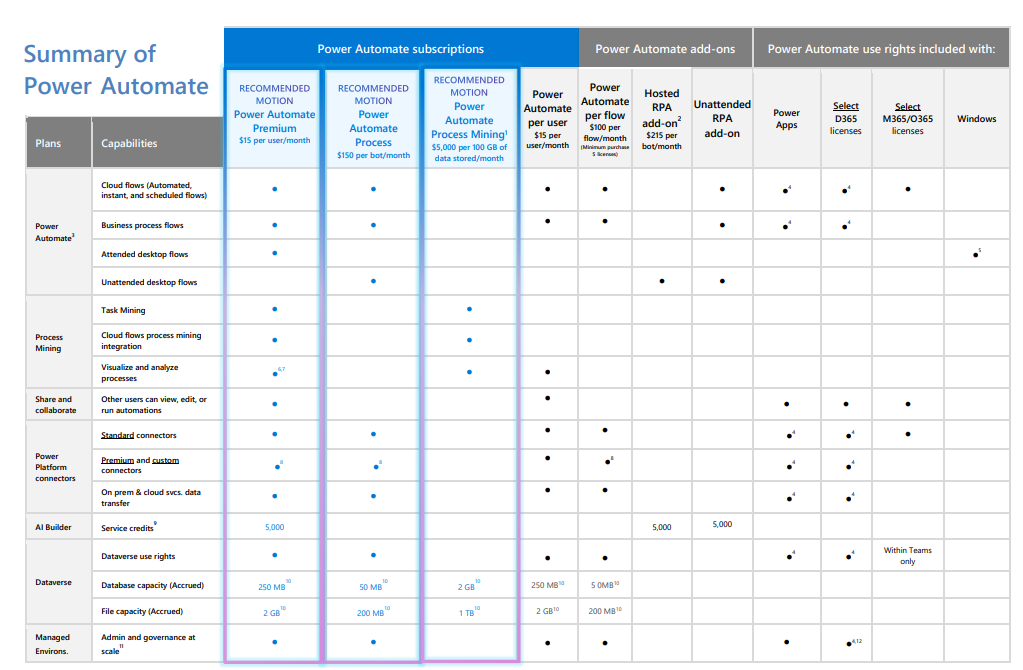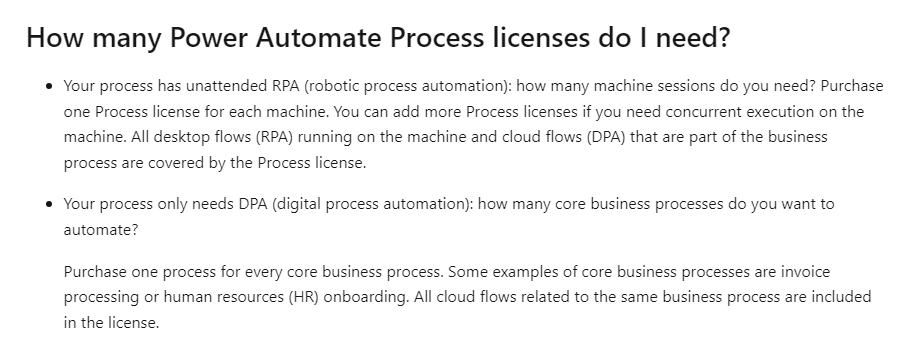Microsoft licensing has always been a complex area to navigate. With changes being introduced regularly it can be difficult to keep on top of it all. This is especially the case with Power Platform licensing. During the Microsoft Inspire event earlier this year, changes were announced for the Power Platform offering, and in this article, we want to summarise some of the differences and how this might impact users.
Power Apps Licensing
Power Apps is the easiest solutions to navigate so let’s start there. Due to Microsoft’s marketing efforts, you will notice The Power Apps webpage has been simplified, much like their other product pages. Don’t panic if you don’t see something that you were referring to before, because if you access Microsoft Learn or the Power Platform licensing guide all the details about Power Apps per app, pay-as-you-go plans, and seeded rights within Dynamics 365 and Microsoft 365 licenses are still visible.
There has been one notable change, and this relates to the naming convention for ‘Power Apps per user’ this has now been renamed to ‘Power Apps Premium’. So how does this effect per app passes? The name of this license will stay the same. Microsoft wants users to focus on the licensing for users for the platform as opposed to the individual apps. They aim to focus more on the Power Apps Premium license. When it comes to pricing, nothing has changed for Power Apps.
Power Automate Licensing
Process mining is the main change to come to Power Automate with the product becoming generally available. Similar to the Power Apps webpage, the Power Automate page has been simplified. Looking at the summary table for Power Automate in the licensing guide illustrates the challenge with more options being introduced:

From this table the ‘recommended motion’ columns are new and what we want to pay attention to. The process mining capacity license is a totally separate entity and focuses on classic Power Automate scenarios.
Power Automate Premium
For new customers that decide to purchase Power Automate licenses for their users, they’re getting everything that’s in the $15 “Power Automate per user” license plus they can run attended RPA bots (unattended bots running on a virtual machine / cloud still cost extra). The old “Power Automate per user” license is still in place for current customers with contracts & active subscriptions.
Power Automate Process
Power Automate Process is similar to the Premium license and covers both DPA (digital process automation, aka cloud flows) and RPA (robotic process automation = desktop flows). Unlike with the Premium license, this one is not licensed per user but rather per flow.
Power Automate Per Flow
The price of the old “Power Automate per flow” license is $100, yet there’s a minimum of purchase of 5 licenses. With the new “Power Automate Process” license, there are no longer any minimums. The price of the license has gone up 50%, which is likely because of Microsoft’s aim to primarily push it for the RPA scenarios. As a result, once the number of licenses needed in your organisation grows, the cost would increase. The Power Automate Process licensing documentation suggests several flows related to a single core business process could be associated with one another.

The full information relating to how this can be performed and the limits in the platform to enforce the licensing model of “Power Automate Process” have not yet been disclosed. As it currently stands it is too early to tell what scenarios are suitable for this licensing option and how that will impact the cost or architecture of the solution. For now, using the “per flow” model remains an option. However, in the Power Platform licensing FAQ it has been stated that these legacy licenses will be removed from the price list of February 1, 2024:

Summary
We are sure the changes won’t end here as is the case when it comes to Microsoft licensing, but to summarise, here are the main changes for 2023 that you need to be aware of:
- Power Apps per user is now Power Apps Premium
- Power Automate Premium is Power Automate per user with added RPA capabilities
- Power Automate Process is Power Automate per flow with added capabilities
If you’d like any more information about Power Platform or have questions about the points raised in this article, get in touch with our team who can help.



